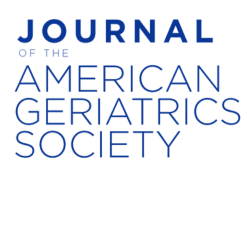PBJ research report and related news: Tying Turnover to Quality
Notes from PBJ Central: This study is of particular interest as it was funded by a grant from CMS. Authors include Evan Shulman, currently Director of the Nursing Homes division at CMS and three employees of ABT Associates, a CMS contractor working on the Five Star Quality Rating System since 2008. This study illustrates the closeness of research to policy making from CMS.

Association between staff turnover and nursing home quality – evidence from payroll-based journal data
Staff turnover is considered an important indicator of nursing home quality. We used auditable staffing data from the Centers for Medicare & Medicaid Services (CMS) Payroll-Based Journal (PBJ) system to calculate turnover measures for nurse staff and administrators and examined the relationship between turnover and nursing home quality.
Mean annual turnover rates were about 44% for RNs and 46% for total nurse staff. On average, there was one administrator leaving each nursing home during this period although about half of nursing homes had no administrator turnover.
Turnover rates varied greatly across nursing homes. For-profit and larger nursing homes had higher turnover rates. Higher turnover was consistently associated with lower quality of care.
Zheng, Qing, et al. “Association between Staff Turnover and Nursing Home Quality – Evidence from Payroll‐based Journal Data.” Journal of the American Geriatrics Society, 2022. Crossref, agsjournals.onlinelibrary.wiley.com/doi/10.1111/jgs.17843.

Staff retention crucial after study confirms lower turnover linked to higher quality of care at nursing homes
Nursing home providers should consider implementing innovative strategies for retaining workers after a new study found that low staff turnover was consistently associated with higher quality of care, researchers said.
“While these actions are challenging — especially given that nursing homes are navigating the COVID-19 pandemic, they are clearly warranted if we seek an improved quality of care for nursing home residents,” Qing Zheng, Ph.D., lead author and health economist at research firm Abt Associates, told McKnight’s Long-Term Care News on Monday.
The findings were published Saturday in the Journal of the American Geriatrics Society. Study authors also include Evan Schulman, director of the Division of Nursing Homes for the Centers for Medicare & Medicaid Services; Christianna S. Williams Ph.D. and Alan J. White, Ph.D., who both work for Abt Associates, a federal contractor. The study was funded by CMS under a research contract.
Brown, Danielle. “Staff Retention Crucial after Study Confirms Lower Turnover Linked to Higher Quality of Care at Nursing Homes.” McKnight’s Long-Term Care News, 10 May 2022, www.mcknights.com/news/study-lower-turnover-linked-to-higher-quality-of-care-at-nursing-homes.

Prioritizing nursing home staff and leadership consistency to improve quality
EDITORIAL: The urgency for retaining qualified, caring staff and administrators is keenly felt at the ground level of the nursing home industry. Facility-level administrators need to be empowered, supported, and inspired to create cultures where clinical staff thrive. Policymakers at the federal and state levels should focus on designing incentives to recruit and retain staff in this high-need setting.
The finding that increased turnover is associated with increased, potentially avoidable, healthcare utilization supports an economic case to funnel funds toward retaining nursing home staff and administrators.
Fundamentally, nursing home staff need fair compensation and benefit packages, as well as adequate training and support to do their work. The analyses by Zheng and colleagues, describing the associations of nursing home staff turnover and quality, help orient us all toward this vital work—we need to prioritize nurturing and supporting staff so that they can deliver the hands-on care nursing home residents require.
Carnahan, J.L. and Unroe, K.T. (2022), Prioritizing nursing home staff and leadership consistency to improve quality. J Am Geriatr Soc, 70: 2472-2473. https://doi.org/10.1111/jgs.17938


